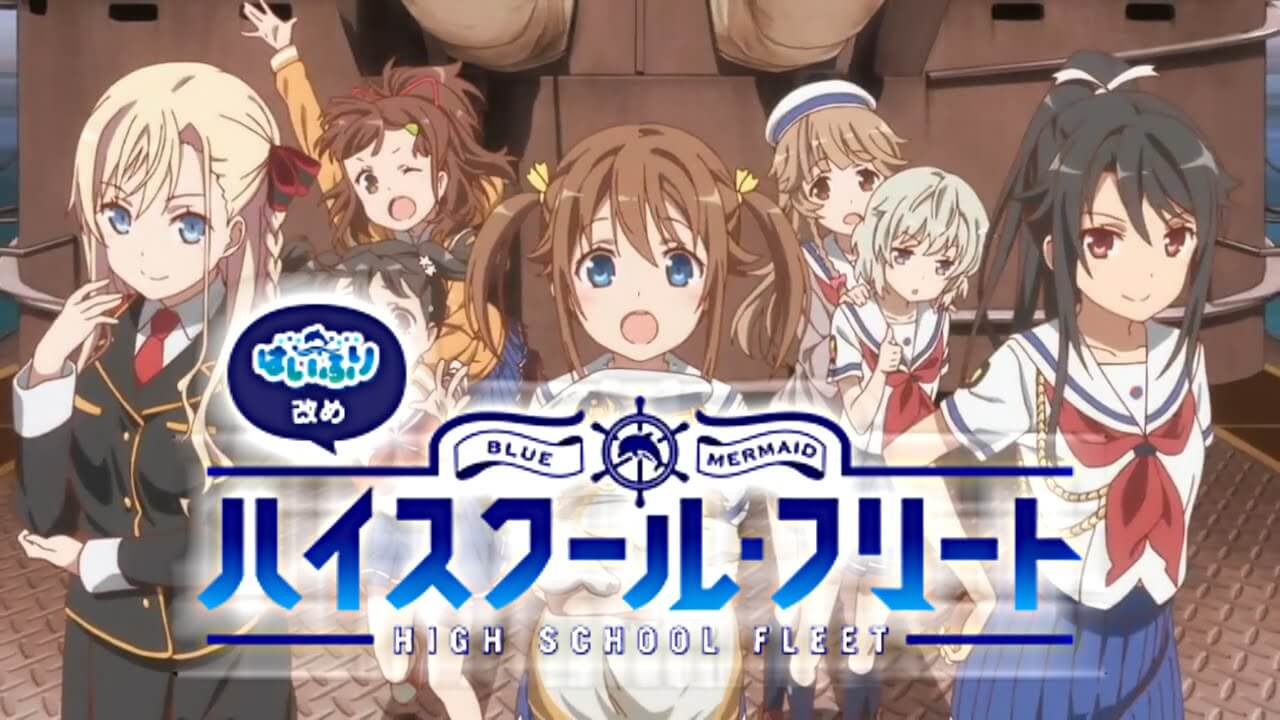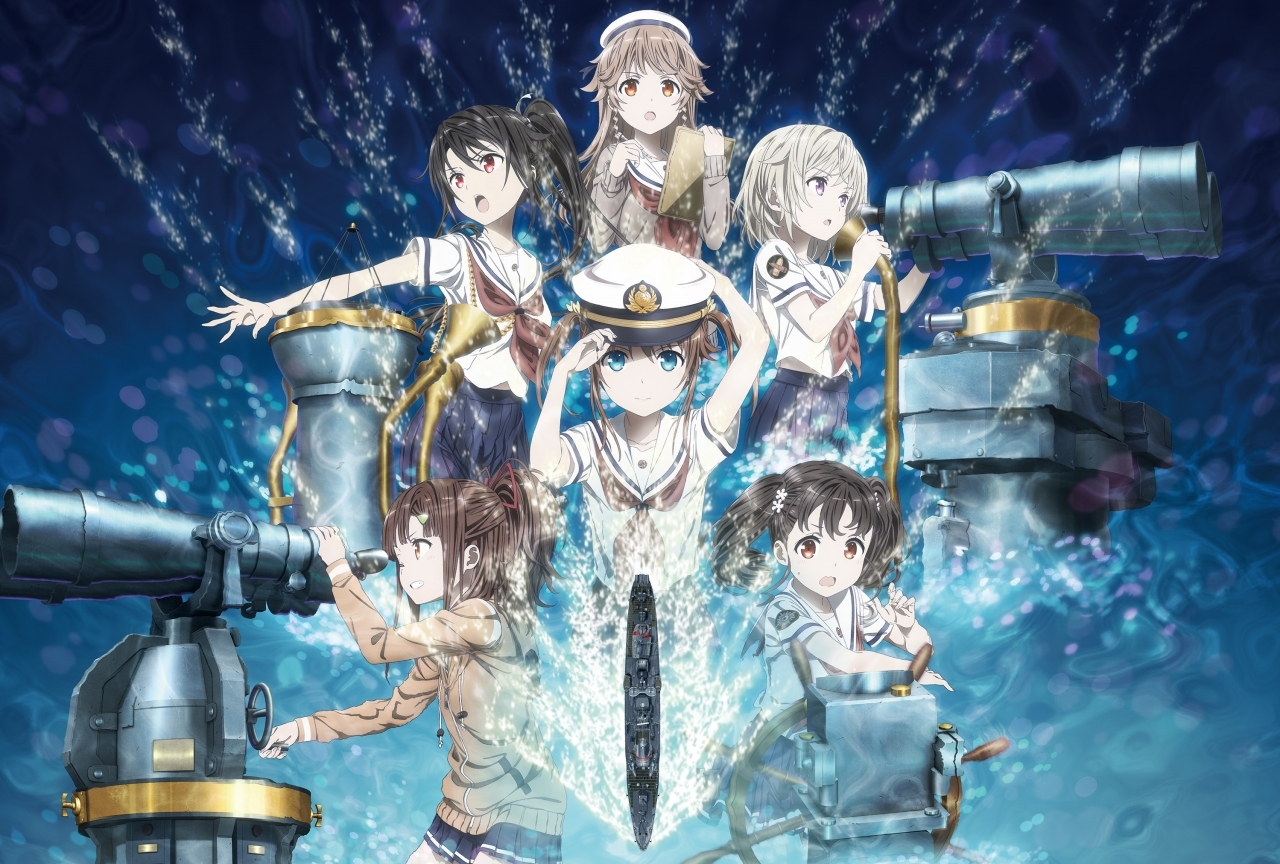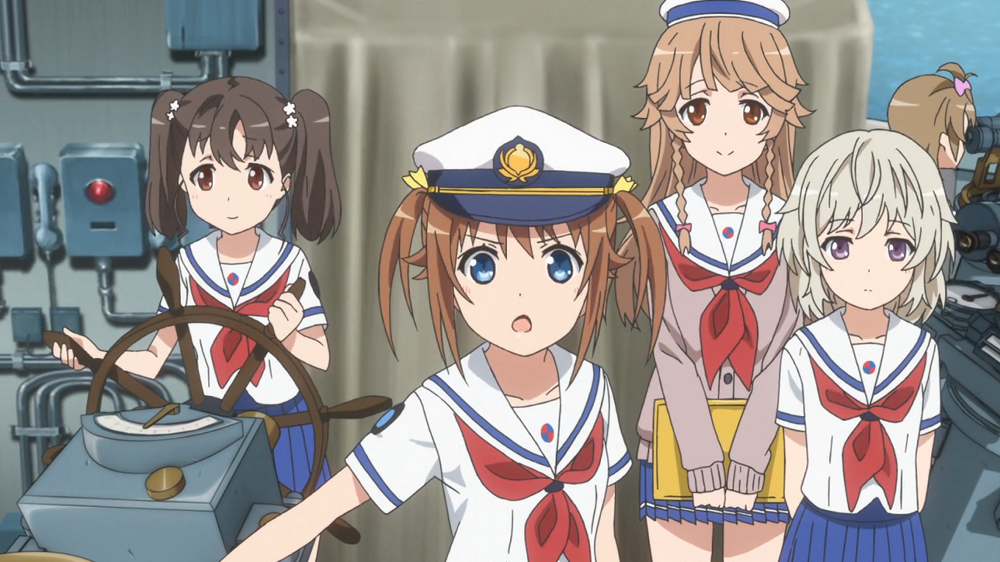Contents
Introduction

Welcome to the captivating world of "High School Fleet," also known as "Hai-Furi," where the drama of high school life meets the high stakes of maritime adventure. Set in a world where much of Japan's land has been submerged underwater, this unique anime series follows the lives of young women training to protect the seas at Yokosuka's Marine High School.
"Hey, have you seen the latest episode of 'High School Fleet'?" might be a common question among fans who appreciate not just the action and strategy, but the deep bonds of friendship and the challenges of leadership these girls face. Each episode dives into the complexities of operating navy ships and the teamwork essential for navigating the treacherous waters they patrol.
The series introduces Akeno Misaki, a spirited and optimistic student who becomes the captain of the destroyer ship Harekaze. When her crew encounters a mysterious and deadly virus affecting other ships, Akeno and her classmates must uncover the truth behind this maritime crisis while proving their innocence and maintaining their duties.
High School Fleet combines elements of traditional slice-of-life anime with thrilling naval battles, making it a unique pick in the anime sea of options. It tackles themes like leadership, friendship, and duty, resonating well with those who love stories of personal growth and teamwork.
This series not only entertains but also sparks conversations about the responsibilities of leadership and the bonds formed in the face of adversity. Whether you're a fan of naval history, military tactics, or just looking for a series about overcoming odds with friends, "High School Fleet" offers something for everyone. Join Akeno and her friends as they steer through both literal and metaphorical storms, navigating the vast oceans of their world and the turbulent waters of adolescence.
Plot Summary
"High School Fleet," also affectionately known by fans as "Hai-Furi," embarks on a nautical adventure unlike any other. Picture this: a world where students navigate the vast oceans as part of their school curriculum, mastering the art of seafaring aboard a fleet of ships. It’s not just any maritime high school, though. These students are training to become defenders of the sea routes and protectors of international waters.
So, what's the catch? The story kicks off with Akeno Misaki stepping into the role of captain aboard the destroyer Harekaze. On what seems to be a routine sea outing, the plot thickens as they encounter a mysterious, aggressive ship. Akeno and her crew are thrust into an unexpected battle, marking the start of an exhilarating and perilous journey.
The twist? Their own instructors turn against them under suspicious circumstances. With their teachers aiming torpedoes in their direction, the girls on the Harekaze must navigate a sea of challenges, including proving their innocence. They face the monumental task of unraveling a conspiracy that threatens not just their futures but the very security of the world.
As the series progresses, viewers are treated to an intense blend of mystery, action, and high-seas adventure. The crew of the Harekaze must use all their training, wit, and courage to survive each episode’s trials. From battling rogue ships to dealing with internal disputes, "High School Fleet" offers a thrilling exploration of camaraderie and command under pressure.
This unique blend of school life and naval warfare makes "High School Fleet" a standout series. It delves deep into the themes of loyalty, friendship, and the burdens of leadership, resonating with anyone who’s ever had to steer their own ship through the stormy waters of adolescence and responsibility. Join Akeno and her classmates as they set sail on a journey full of danger, mystery, and personal growth, all while trying to keep their ship afloat in more ways than one.
Character Analysis

"High School Fleet," often abbreviated as "Hai-Furi," is not just a series about naval battles and school life; it’s a profound exploration of its characters, particularly focusing on the dynamics of its diverse and compelling female cast. At the heart of this narrative is Akeno Misaki, the enthusiastic and idealistic captain of the destroyer Harekaze. Akeno's leadership is tested throughout the series, making her development from a naive cadet to a decisive leader one of the show’s highlights.
Beside her stands the calm and collected Mashiro Munetani, the deputy captain. Her cautious nature often clashes with Akeno's boldness, providing the series with much of its internal tension and growth. Their relationship, filled with challenges, evolves into a powerful bond, showcasing a deep understanding and mutual respect that highlights the theme of camaraderie.
Among the crew, we also meet other key characters like Kouko Nosa, the radar operator whose keen observation skills are crucial during conflicts, and Shima Tateishi, the torpedoman who brings a mix of expertise and humor to tense moments. Each character is crafted with care, allowing their individual traits to shine, contributing to the team's overall dynamics and the storyline's progression.
Moreover, the series introduces the viewer to a spectrum of personalities that enhance the group dynamics aboard the Harekaze. From the engineering team’s inventive efforts to keep the ship running to the navigation team's strategic maneuvers, each member’s contribution is vital for their survival and success.
The character development in "High School Fleet" is intricately tied to the series' central conflicts and thematic elements, such as leadership, trust, and sacrifice. As the crew faces off against mysterious enemies and unravels conspiracies, their growth is portrayed not just through dialogues or direct confrontations, but also through subtle, everyday interactions on board their ship. This approach not only enriches the narrative but makes the characters relatable and inspiring, ensuring that "High School Fleet" sails smoothly into the hearts of its viewers.
Themes and Symbolism

"High School Fleet," known as "Hai-Furi," sails beyond its surface narrative of high seas adventures, anchoring its story deeply in themes of leadership, friendship, and the trials of teamwork. This animated series presents a riveting exploration of what it means to lead and make decisions under pressure through the lives of its youthful characters at the Yokosuka Girls' Marine High School.
The show is set in an alternate reality where students train as protectors of the sea. The main theme revolves around the responsibilities of leadership, as seen through the protagonist, Akeno Misaki. Her journey from a hopeful cadet to a decisive leader embodies the core message of the series—true leadership is tested not by one's ability to wield authority, but by their capacity to nurture trust and teamwork.
Symbolically, the vast ocean represents the unknown challenges and the isolation often felt in leadership roles. The unpredictable waters mirror the turbulent trials Akeno and her crew must navigate, reflecting the internal and external conflicts that leaders face. As the crew encounters mysterious vessels and combats rogue waves, the narrative delves into themes of trust, illustrating that reliance on each other is vital for survival in the vast, often unforgiving maritime expanse.
Friendship is another central motif, portrayed through the strong bonds between the crew members. The series highlights that in the face of adversity, camaraderie becomes the ship's strongest shield. This theme is visually symbolized through the series’ recurrent images of calm seas following storms, emphasizing peace and stability achieved through unity.
Moreover, "High School Fleet" touches on the symbolism of legacy and inheritance through the lineage of sailors, where the young cadets must carry forward the duties and honors of their predecessors. This theme is particularly poignant in a world that relies on these maritime protectors, showing how past lessons shape future leadership.
Through engaging dialogues and compelling scenarios, "High School Fleet" offers a profound narrative packed with life lessons wrapped in the thrilling guise of naval conflicts, making it a standout anime that resonates well beyond its immediate visual appeal.
Cultural Impact and Reception

"High School Fleet," also known affectionately as "Hai-Furi," has carved out a unique niche within the anime community, resonating deeply with fans and stirring discussions around its cultural significance and reception. This anime series blends the excitement of maritime adventure with the touching dynamics of its all-female crew, navigating through both literal and metaphorical high seas.
From the outset, "High School Fleet" has engaged audiences with its detailed portrayal of naval operations and life at sea, which is a less common theme in anime. This fresh approach has not only attracted viewers interested in maritime subjects but also those who appreciate character-driven stories set against unconventional backdrops. The series has been particularly praised for its rigorous attention to detail in the depiction of ship mechanics and naval protocol, enriching the viewer's experience and education.
Culturally, "Hai-Furi" taps into a broader fascination with naval history and the concept of mikosho, or girls training to become protectors of the sea, which parallels with traditional roles in other global navies. It reflects a growing interest in seeing strong, capable female characters in leadership roles, challenging gender norms and inspiring a dialogue about women's roles in military and defense contexts.
The reception of "High School Fleet" also highlights the impact of well-executed ensemble casts in anime. Each character brings a unique flavor to the crew, making their interactions and development a core part of the series' appeal. This has fostered a dedicated fan base that follows not only for the thrilling naval battles but for the deep personal growth and bonds between characters.
Viewer engagement extends beyond just watching; it spans into fan discussions, fan art, and even cosplay, indicating the series' ability to inspire creativity among its audience. Furthermore, its educational aspect—introducing naval life and operations in an accessible manner—has been an unexpected boon, enriching its cultural footprint.
In conclusion, "High School Fleet" stands out not just for its engaging plot and dynamic character ensemble but also for its cultural resonance within and outside the anime community. It's a vivid example of how anime can transcend entertainment, provoke thought, and inspire a deeper appreciation of lesser-known realms like maritime defense.



